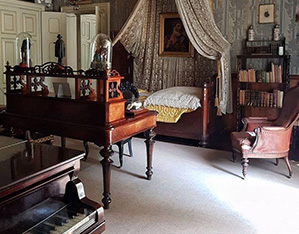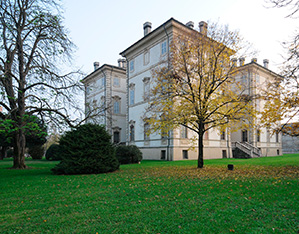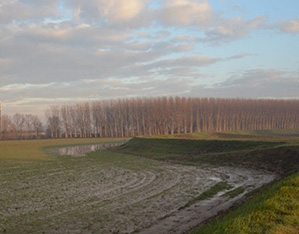“With immense pleasure we started planting a garden that initially was called ‘Peppina’s garden’. Then we extended it and called it our garden. Now that it is huge it is definitely ‘his’ garden.” (Giuseppina Strepponi, letter to Clara Maffei, 14 June 1867).
Following the advice of his friend and supporter Antonio Barezzi, Giuseppe Verdi bought the property in 1848, personally overseeing the necessary alterations and extensions to turn the building into a residency. Verdi lived here from 1851 until his death (1901). The original rural house saw the addition of two terraced wings. Other additions were a chapel, the greenhouses and a warehouse. Besides administering the estate, the composter and his second wife Giuseppina Strepponi put great care into the definition of the park with its many different trees, including some exotic species such as the bald cypresses growing around the pond, featuring a small island and an aviary. A hill with an ice-house and an artificial grotto just by the lake with the interiors completely covered in stalactites and river stones complete the garden features, that also include a few early 18th-century statues by Giuseppe Torretti originally from Villa Pallavicino in Busseto. Not far from the villa, Verdi also had a well dug out to provide water for the irrigation of the park, also installing a steam machine still visible today inside a small building. Double rows of poplars growing along the Ongina stream and a path lined with sycamore trees crossing the fields create a transition between the park and the surrounding countryside.





